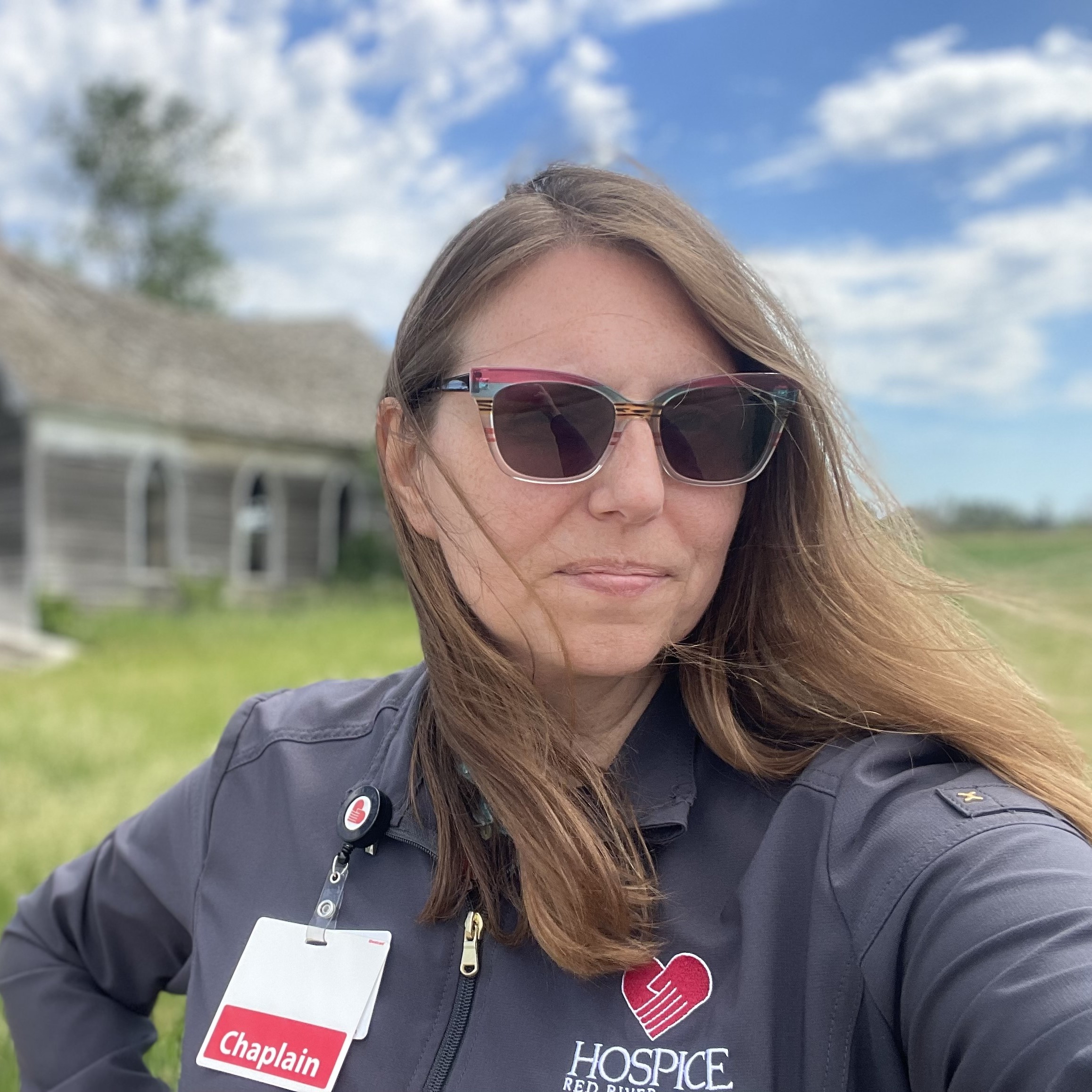Prairie Precarity

In October of 2023, while driving in my hospice territory, I found myself on an unfamiliar stretch of rural North Dakota road. Suddenly, like a strange oasis in the desert, a dilapidated structure appeared to the southeast of me. My eyes fell on the building’s crumbling bell tower, and I knew instantly the structure had been a church. Looking at it, I couldn’t even begin to imagine when a congregation had last gathered there for worship or study; I certainly hoped it had been like an oasis, offering spiritual nourishment for thirsty souls on the often-harsh prairie. That October day, I didn’t have much time for daydreaming or exploration, but I did pull over to snap a picture on my phone.
Four months later, this church came to mind as I was making an initial visit to a new patient. He was a grizzly, old fellow who swore up a storm during my visit, which endeared me to him almost immediately! This patient did not claim any particular faith or religious connection, despite a heart for global missions, and despite a wealth of Christian paraphernalia on every wall of his rural farmhouse. I was so interested, but I did not want to push for more information than I had earned during this initial entrée into his life.
About a half-hour into my visit, my eye caught a framed photo above my patient’s living room television: it was an abandoned church building, much like the one I had seen months earlier. I called his attention to it, telling him how much I love abandoned churches. He told me he’d taken the photo many years ago and that he assumed the structure had long since collapsed. He also proceeded to describe the church’s location and, as I listened to the town he named, and its general direction from his home, I knew I’d never been to the area he described. But I wanted to connect with this patient through his photo. I scrolled through the photos on my own phone and, when I found the one I wanted, I showed it to my patient. “It’s the same church!” he exclaimed as he looked at my phone. He then lifted his gaunt head and pointed a long, thin finger across the room, to the framed photo he had taken.
His description of the church’s location had been about 40 miles off, yet, upon closer inspection, our respective photos were clearly the same dilapidated, spiritual oasis. In my patient’s photo, the outer boards of the building sagged a lot less than they did in mine, and, in his photo, you could almost imagine being able to safely walk into and around the church. It was old, it had been abandoned, but a measure of its physical strength remained. By the time I got to it, however, much of that physical strength had been battered away by time and extreme North Dakota weather.
Sometime in the spring of 2024, I tried – and failed – to find the church again. I felt so compelled to go back. Then, in June, with some guidance from a couple of locals, I found it.
The gravel crunched beneath my tires as I slowed to a stop. I exited my car and carefully stepped my way through the tall grass toward the church building. It felt a little like heading into an initial visit with a new hospice patient: the ground was unfamiliar, I worried I might encounter unwanted obstacles, and, like the very real, very fragile bodies of my beloved patients, the building’s structure seemed likely to surrender with even the slightest breeze. I was cautious and stayed outside, peering inward from the blown-out windows, and extending my arm in to capture a few photos of what remained inside. Walls had long collapsed and floors broken apart. In the eight months since I’d been there the first time, the bell tower’s support beams had fallen to the ground.
I only got three visits with the sweet and surly patient with whom I exchanged photographs of this sacred, prairie oasis. Disease ravaged his body faster than North Dakota winds could topple that other sacred structure. Wood and cement, skin and bones, wind and disease, seasons and death. What a gift it is to bear witness to it all.
Rev. Jenny Hallenbeck Orr lives in Bismarck, North Dakota, and was a church pastor for nearly 20 years before becoming a chaplain for Hospice of the Red River Valley in November of 2022. Jenny recently finished her first unit of CPE and she can be reached at jenny.orr@hrrv.org. Gratitude for inspiration goes to Rev. Gina Harvey (Director of Spiritual Care and CPE Educator for Sanford Health in Fargo, North Dakota) and Chaplain Paul Peterson (CHI St. Francis Medical Center in Breckenridge, Minnesota).
